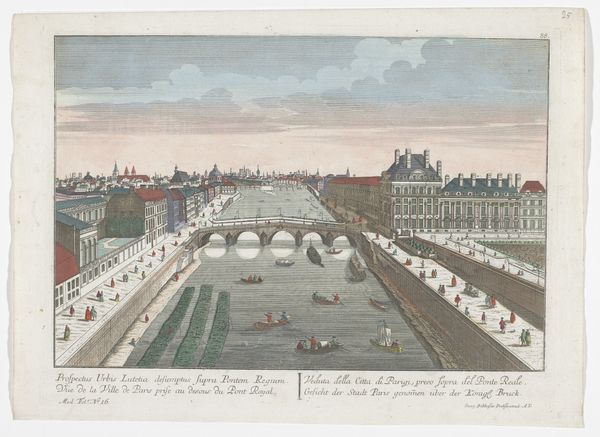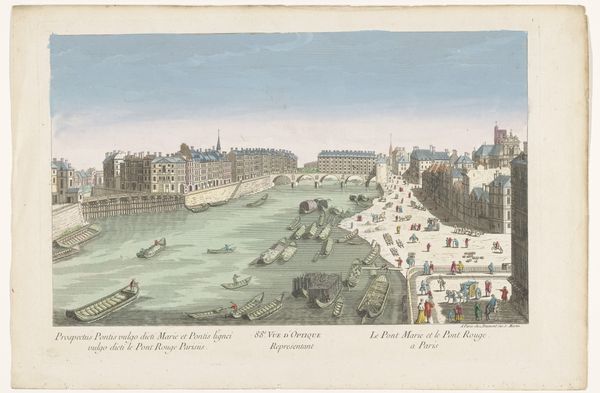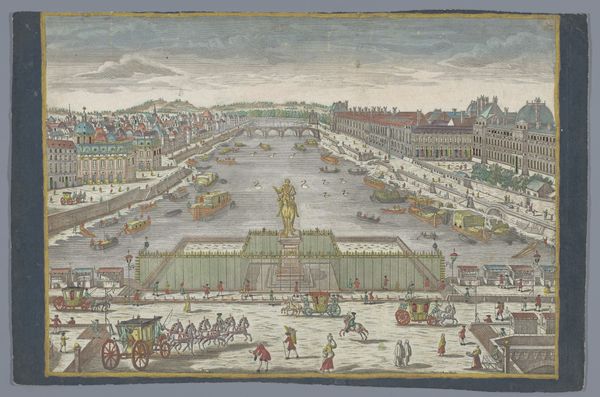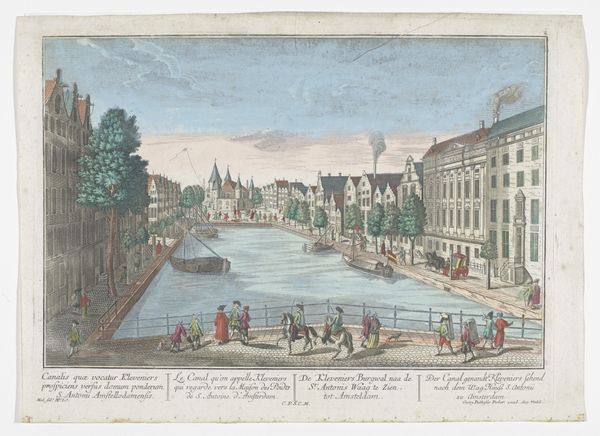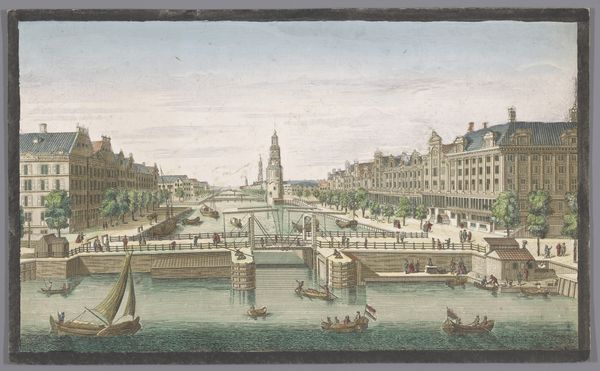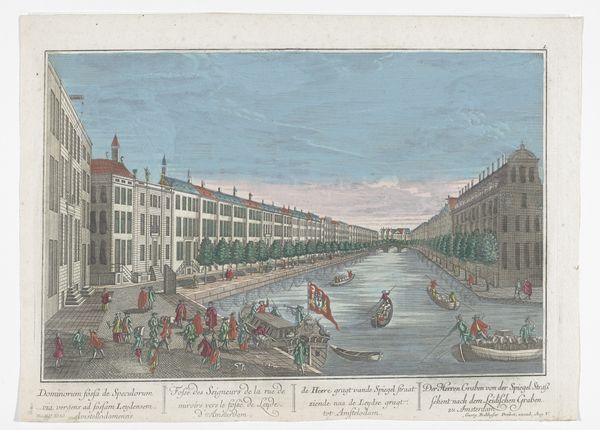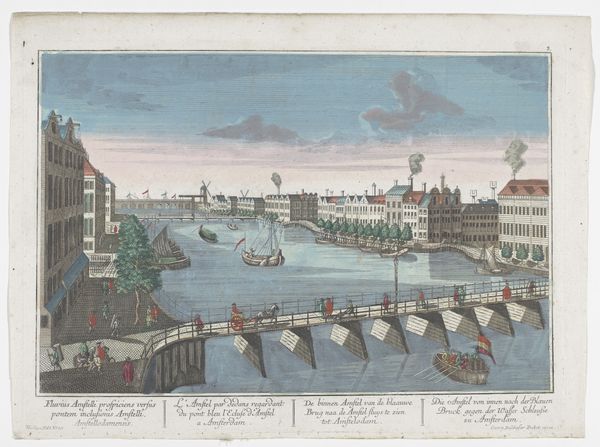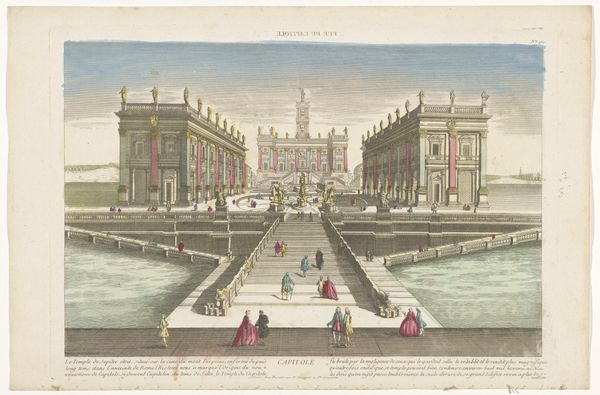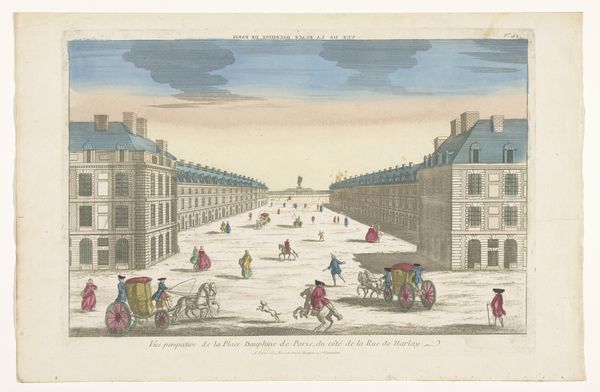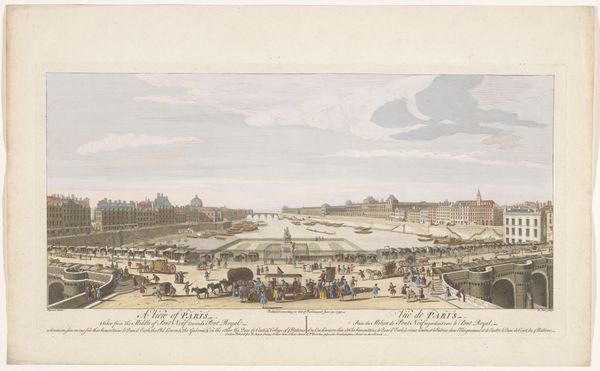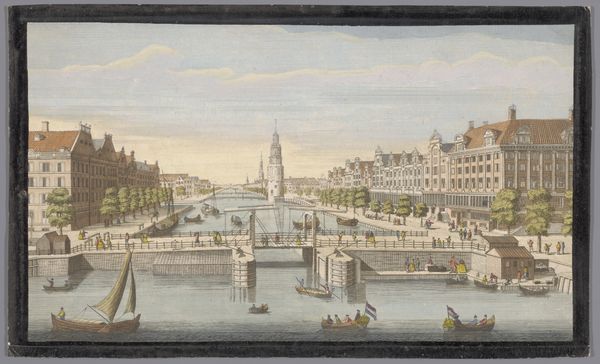
Gezicht op de Pont Neuf over de rivier de Seine te Parijs, gezien richting de Pont Royal 1742 - 1801
0:00
0:00
georgbalthasarprobst
Rijksmuseum
Dimensions: height 333 mm, width 451 mm
Copyright: Rijks Museum: Open Domain
Curator: What a charming vista. We’re looking at a print called "Gezicht op de Pont Neuf over de rivier de Seine te Parijs, gezien richting de Pont Royal", dating somewhere between 1742 and 1801 and created by Georg Balthasar Probst. It depicts a view of the Pont Neuf in Paris, looking towards the Pont Royal. Editor: It's lovely, a bit dreamlike even. The gentle watercolor washes give everything a softened, almost hazy appearance. The composition is very balanced, drawing the eye deep into the cityscape using the river as a guide. Curator: Indeed. The perspective, though perhaps not mathematically perfect, is ingeniously employed. We can use this engraving to analyze urban power structures. Note the placement of the equestrian statue, probably a monarch. Who is truly served by this beautified view? What classes are most represented here and who might be absent? Editor: I'm drawn to the detailed rendering of the architectural elements, the facades of the buildings meticulously outlined. The subtle shifts in color within the water and the sky give depth, an attention to form over pure surface-level detail that really pulls you in. It looks so technically pristine for that period. Curator: And technically pristine for the privileged classes who benefited from that aestheticization. It is easy to become lost in its pleasing artistry, but the reality of urban inequalities needs to be recognized. Those carriages represent an economic stratification with very little vertical mobility available. We are experiencing an aspirational visual for the haves at the expense of the have-nots. Editor: That may well be, but look at the confident application of line. Probst clearly understood how to use light and shadow to create volume and interest. To reduce it to simply a depiction of economic disparities seems a disservice to its formal qualities. Curator: Perhaps, but the aesthetic cannot be divorced from the sociopolitical context in which it was made and consumed. Looking closely reveals more profound truths, you just have to change the frame a bit. Editor: Well, I will definitely ponder the historical implications that you point out, while still marveling at how effectively the artist captured a sense of place with limited artistic means.
Comments
No comments
Be the first to comment and join the conversation on the ultimate creative platform.
